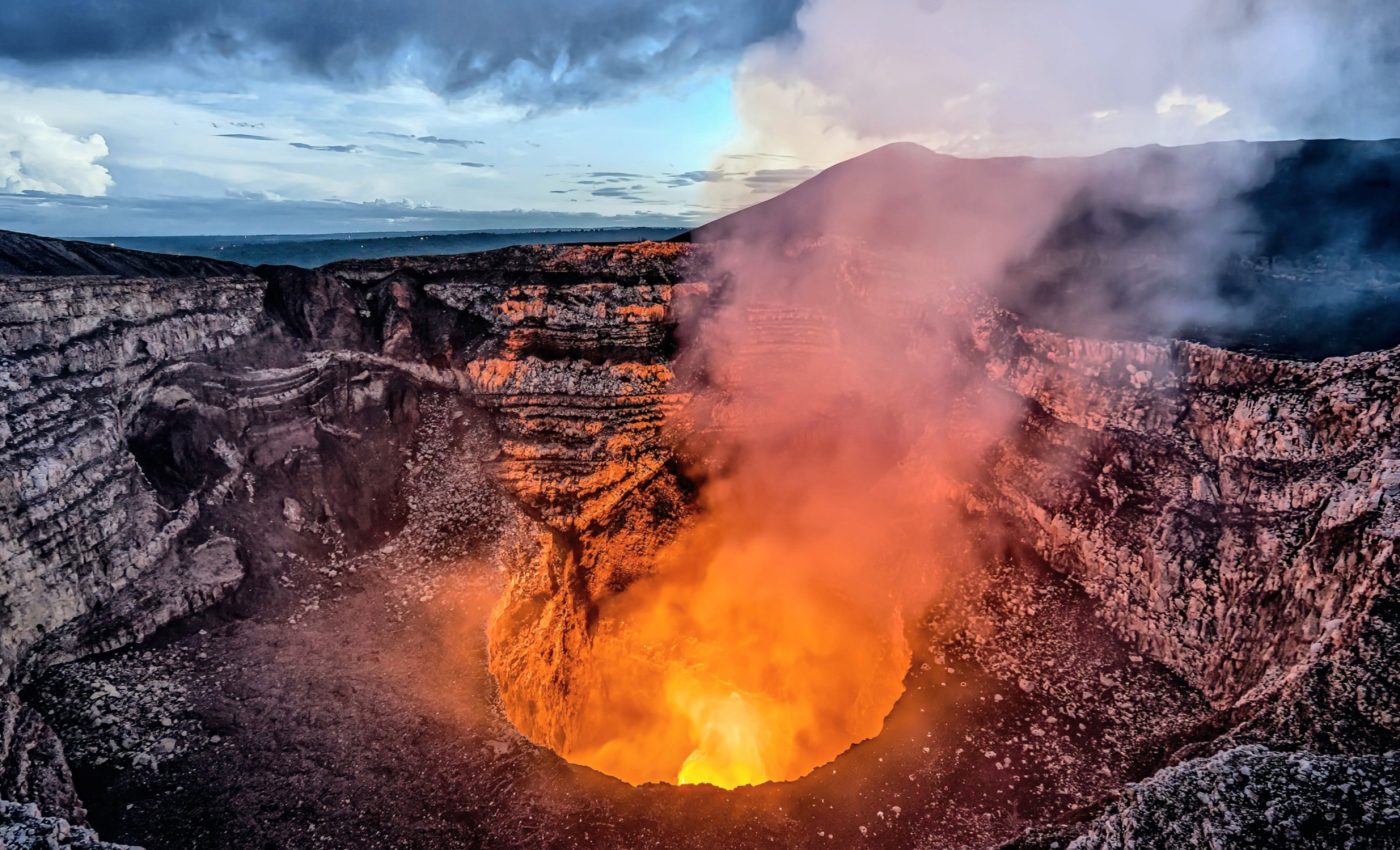
Volcanic cooling, not warming, caused a major mass extinction
Approximately 201.6 million years ago, Earth experienced one of its most catastrophic mass extinctions, wiping out nearly 75% of all species.
This upheaval, marking the transition from the Triassic to the Jurassic period, coincided with massive volcanic eruptions that tore apart the supercontinent Pangaea, paving the way for dinosaurs to dominate.
What caused the mass extinction?
Yet, despite decades of research, the precise mechanisms of this extinction event have remained elusive.
The most prominent theory has held that volcanic carbon dioxide (CO2) raised global temperatures, leading to extreme warming and ocean acidification that proved unsustainable for most species.
Now, a new study published in the Proceedings of the National Academy of Sciences challenges this longstanding belief, presenting evidence that severe cooling from volcanic sulfates – not warming – was the primary trigger.
The study proposes that volcanic winters from massive, short-lived lava eruptions plunged the planet into drastic cold, instantly disrupting ecosystems long adapted to warmer climates.
Volcanic cooling as the main driver
Led by Dennis Kent of Columbia University’s Lamont-Doherty Earth Observatory, the team analyzed evidence from the Central Atlantic Magmatic Province (CAMP), a volcanic region that erupted as Pangaea split apart.
Unlike the gradual CO2 buildup that would have driven warming over millennia, volcanic sulfate aerosols have a nearly immediate cooling effect, reflecting sunlight away from Earth.
“Carbon dioxide and sulfates act not just in opposite ways, but opposite time frames. It takes a long time for carbon dioxide to build up and heat things, but the effect of sulfates is pretty much instant,” Kent explained.
This new insight places the initial extinction-inducing events within a time frame that “happened in the span of a lifetime.” This makes it relatable, noted Kent, to modern humanity’s grasp of rapid climate events.
Mysterious impact of the eruptions
The Triassic-Jurassic extinction has long been associated with CAMP eruptions, but the timing and intensity of these eruptions had been unclear.
In an earlier study in 2013, Kent and his colleagues linked CAMP to this extinction through consistent magnetic polarity in rock layers, establishing a near-simultaneous timing across what is now North America, Europe, and North Africa.
The actual size and impact of these eruptions, however, remained under debate, with most assuming they had occurred gradually over thousands of years.
Magnetic evidence of catastrophic eruptions
The current study offers a clearer picture by examining magnetic particles in rocks from sites in Morocco, the Bay of Fundy in Nova Scotia, and New Jersey’s Newark Basin.
Through the magnetic alignment of particles preserved in these lava deposits, Kent and his team found that each of the first five eruptions occurred in less than 100 years – too short a span for Earth’s magnetic pole to shift enough to show a directional change in the particles.
These findings suggest that the eruptions were, in fact, monumental, concentrated pulses.
According to co-author Paul Olsen, a Lamont-Doherty paleontologist, small events spread out over tens of thousands of years produce much less of an effect than the same total volume of volcanism concentrated in less than a century.
This concentration likely released vast quantities of sulfates rapidly enough to create widespread cooling, triggering environmental collapse.
Devastating effects of volcanic cooling
The cooling effects of sulfate aerosols, unlike CO2, are short-lived. Sulfates tend to fall out of the atmosphere within a few years, leading to temporary but extreme volcanic winters.
However, the rapid and intense pulses of CAMP eruptions would have produced repeated, harsh cold spells that were hundreds of times more powerful than Iceland’s Laki eruption in 1783, which led to widespread crop failures and climate disruptions across Europe.
In the CAMP regions, temperatures plummeted quickly, altering ecosystems drastically. In sediments just below the first CAMP lava flows, Triassic-era fossils of animals like large semiaquatic crocodilian relatives, tree-dwelling lizards, and flat-headed amphibians appear.
Above these lava layers, they disappear. Small feathered dinosaurs and early mammals, which were already present but in limited diversity, seem to have survived, perhaps due to their smaller size, ability to burrow, or other adaptive traits that helped them endure colder conditions.
Rapid climate change: Lessons from the past
This revised timeline and understanding of the CAMP eruptions not only reshape our comprehension of the Triassic-Jurassic extinction but also underscore how concentrated environmental shocks can cause rapid, large-scale disruptions.
The authors suggest that the massive and abrupt release of volcanic sulfates forced drastic adaptation, with only certain resilient species surviving. These findings resonate today as we face accelerating climate changes and underscore the potentially devastating effects of rapid environmental shifts.
Kent and his team’s research reveals that the Triassic-Jurassic extinction may have been a lesson in environmental volatility, where intense cold wiped out many species long before sustained heat took its toll.
According to Olsen, the magnitude of the environmental effects are related to how concentrated the events are. This study’s perspective on past mass extinctions offers insights relevant to today’s environmental challenges, reminding us of the power and unpredictability of planetary forces.
—–
Like what you read? Subscribe to our newsletter for engaging articles, exclusive content, and the latest updates.
Check us out on EarthSnap, a free app brought to you by Eric Ralls and Earth.com.
—–













